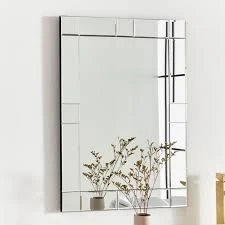

Understanding Double Low E Glass A Modern Solution for Energy Efficiency
In recent years, energy efficiency has become a significant focus for homeowners, builders, and architects alike. Among the various innovations aimed at improving energy performance in buildings, double low E (emissivity) glass has emerged as a leading solution. This advanced glazing technology provides numerous benefits, making it an essential component in modern construction and renovation projects.
What is Double Low E Glass?
Double low E glass refers to a type of insulated glazing that features two layers of low-emissivity (low E) coatings. These coatings are designed to reflect infrared and ultraviolet light, while allowing visible light to pass through. Essentially, low E glass helps to minimize heat transfer between the interior and exterior of a building, providing a barrier that can significantly enhance energy efficiency.
How Does it Work?
The key to the effectiveness of double low E glass lies in its unique construction. Typically, a piece of double-glazed glass consists of two panes of glass separated by an insulating gas, such as argon or krypton. The low E coating is applied to one or both of the inner glass surfaces. When sunlight strikes the glass, the low E coating reflects the heat back into the room during winter, thus maintaining warmth. Conversely, in summer, the coating helps to reflect the sun's heat away from the interior, keeping spaces cooler and more comfortable.
Energy Efficiency Benefits
The primary advantage of using double low E glass is its ability to improve energy efficiency drastically. By reducing thermal transfer, buildings equipped with this type of glazing can achieve significant savings on heating and cooling costs. According to the U.S. Department of Energy, homes that utilize energy-efficient windows can save up to 30% on energy bills, which translates into substantial annual savings.

Moreover, double low E glass contributes to a more consistent indoor temperature. This level of comfort not only enhances the living experience but can also protect furnishings, artwork, and flooring from the damaging effects of UV radiation, which is notorious for causing fading and deterioration over time.
Environmental Impact
Installing double low E glass is not just beneficial for individual homeowners; it also has a positive impact on the environment. By reducing energy consumption, these windows contribute to lower greenhouse gas emissions. In a world increasingly aware of climate change and sustainability, opting for such energy-efficient solutions is an increasingly responsible choice for both new builds and renovations.
Aesthetic Appeal
Besides energy efficiency, double low E glass also offers aesthetic advantages. The glass can be manufactured to meet various design needs and can be customized in thickness, tint, and finish. It allows for large expanses of glass, embracing natural light and ensuring beautiful views without sacrificing comfort or efficiency. As a result, it is particularly popular in modern architectural designs that prioritize open spaces and connectivity with the outdoors.
Conclusion
In conclusion, double low E glass stands out as a pivotal innovation in the realm of energy-efficient building materials. With its ability to enhance thermal performance, reduce energy costs, and minimize environmental impact, it is a smart choice for modern construction and renovation projects. Furthermore, its aesthetic versatility makes it an attractive option for homeowners and designers seeking to achieve both functionality and beauty in their spaces. As we move toward a future where energy efficiency is paramount, double low E glass is bound to play an increasingly important role in shaping sustainable living environments.